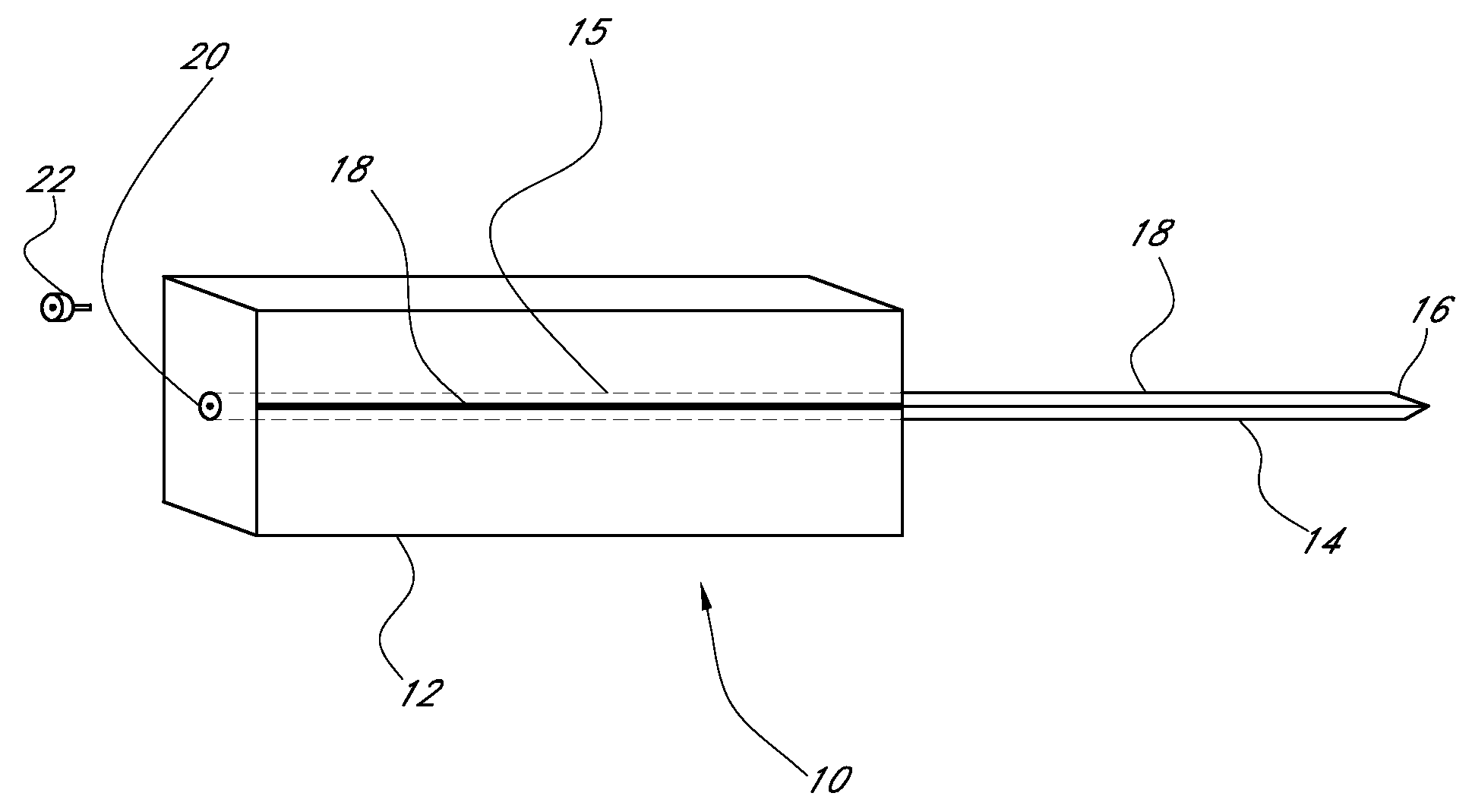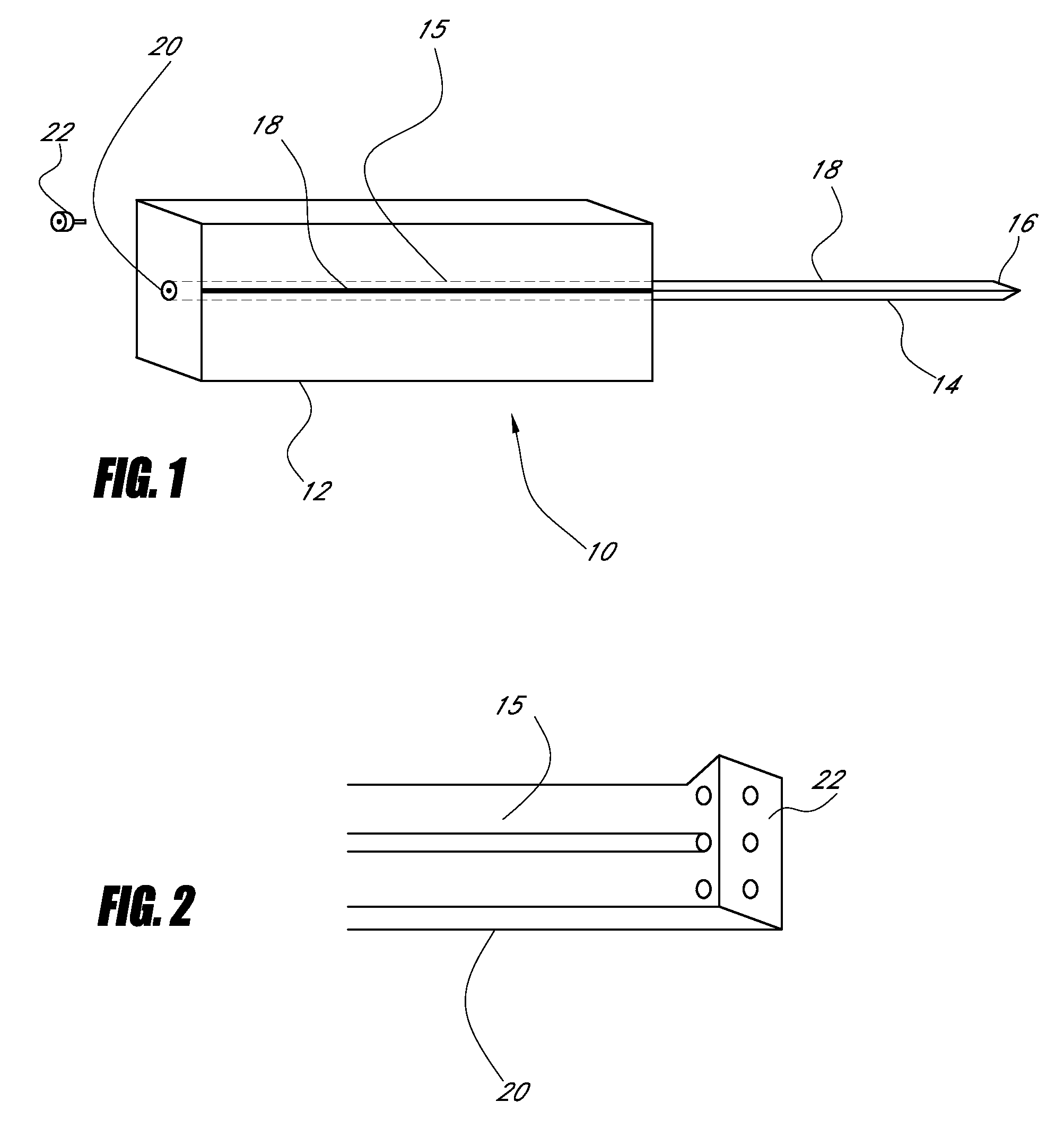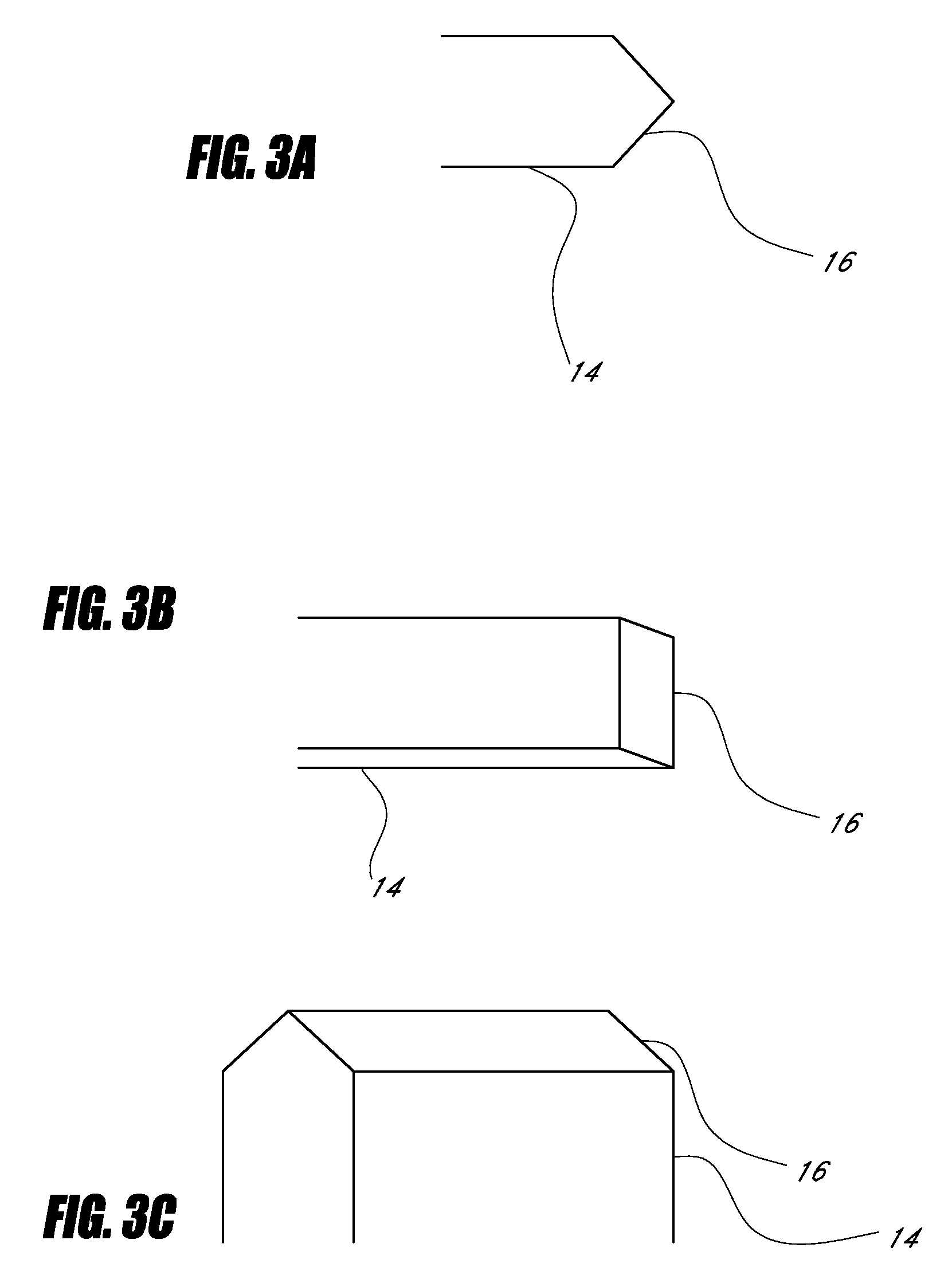Device for cartilage repair
a cartilage repair and cartilage technology, applied in the field of cartilage repair devices, can solve the problems of severe donor limitations, inability to consistently demonstrate successful repair of articular lesions, and inability to achieve consistent results of micro-fracture surgery
- Summary
- Abstract
- Description
- Claims
- Application Information
AI Technical Summary
Problems solved by technology
Method used
Image
Examples
example 1
[0061]PRP was prepared using a centrifuge unit made by Harvest (Plymouth, Mass.). (Similar units are available as The Biomet GPS system, the Depuy Symphony machine and the Medtronic Magellan machine.) Approximately 55 cc of blood was drawn from the patient using a standard sterile syringe, combined with 5 cc of a citrate dextrose solution for anticoagulation, and then spun down to isolate the platelets according to the manufacturer's protocol. These platelets were then resuspended in approximately 3 cc of plasma. The resulting platelet rich plasma solution (PRP) was quite acidic and was neutralized with using approximately 0.05 cc of an 8.4% sodium bicarbonate buffer per cc of PRP under sterile conditions to approximately physiologic pH of 7.4. The PRP was not activated through addition of exogenous activators. This PRP composition is referred to herein as autologous platelet extract (APEX).
example 2
[0062]Fifty cc of whole blood is drawn from a patient, and then prepared according to the method of Knighton, U.S. Pat. No. 5,165,938, column 3. The PRP is activated according to Knighton using recombinant human thrombin. The degranulated platelets are spun down and the releasate containing supernatant is recovered. The releasate may be optionally pH adjusted to a pH of 7.4 using sodium bicarbonate buffer.
example 3
[0063]Thirty ml of whole blood were drawn from a patient. A platelet composition was prepared according to Example 1 of U.S. Pat. No. 5,510,102 to Cochrum, incorporated herein by reference in its entirety, except that no alginate is added to the platelet composition.
PUM
 Login to View More
Login to View More Abstract
Description
Claims
Application Information
 Login to View More
Login to View More - R&D
- Intellectual Property
- Life Sciences
- Materials
- Tech Scout
- Unparalleled Data Quality
- Higher Quality Content
- 60% Fewer Hallucinations
Browse by: Latest US Patents, China's latest patents, Technical Efficacy Thesaurus, Application Domain, Technology Topic, Popular Technical Reports.
© 2025 PatSnap. All rights reserved.Legal|Privacy policy|Modern Slavery Act Transparency Statement|Sitemap|About US| Contact US: help@patsnap.com



